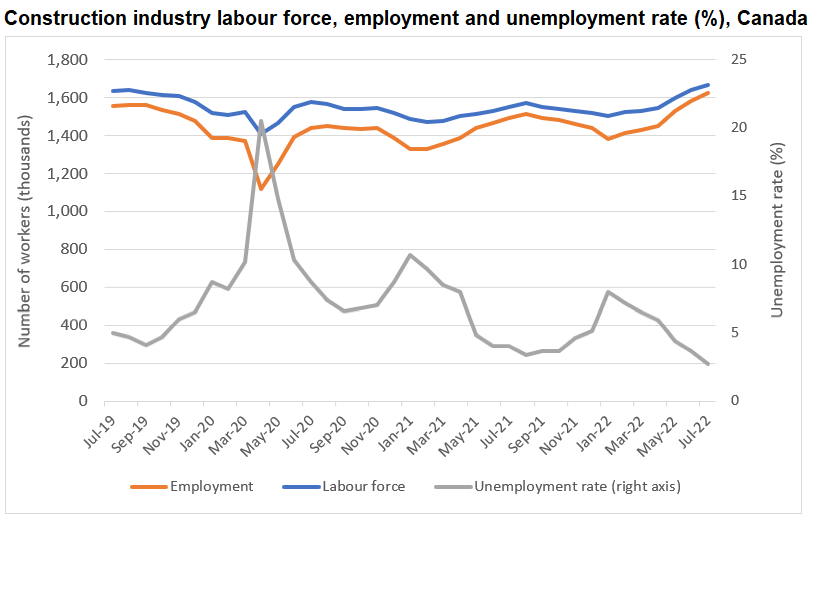Another month of employment data confirms again that Canadian employers continue to face labour shortages.
Although the findings in Statistics Canada’s Labour Force Survey (LFS) for July, which covered the period of July 10 to 16, show a slight dip in all-industry employment from the month previous (-31,000 workers, seasonally adjusted), the survey also shows that the national unemployment rate – at 4.9% – has never been lower. Moreover, at the beginning of May, employers across the country were looking to fill more than one million vacant positions – an increase of 42% over the year previous.
Statistics Canada’s LFS data also found that, even with the tight labour conditions, workers were no more likely to switch jobs than in previous years. The job-changing rate – which measures the proportion of workers who remain employed from one month to the next but who change jobs between months – was 0.6% in both June and July. That figure is almost unchanged from the 0.7% average seen between 2016 and 2019.
Construction again reports record metrics
Construction, meanwhile, continues to report record labour force metrics.
Unadjusted employment increased nationally by 42,600 workers (+2.7%) in July. This brings the industry’s total employment to a new record level of 1,623,200. Employment is now 8.9% higher than in July 2021, 12.7% higher than in July 2020, and 4.5% higher than in July 2019.

Most provinces recorded employment gains in July, ranging from modest increases of 1.6% in New Brunswick to highs of 5.9% in Manitoba and Nova Scotia. Conversely, Prince Edward Island (-1.1%) and Saskatchewan (-0.6%) both experienced slight declines. All provinces reported higher year-over-year levels of employment, with Prince Edward Island (+43.3%), New Brunswick (+22.8%), and Nova Scotia (18.0%) leading the way. Meanwhile, only Saskatchewan, Manitoba, Newfoundland and Labrador, and British Columbia continue to report employment figures below those seen prior to the COVID-19 pandemic.
Construction’s unemployment rate also set a new monthly record. July’s rate fell by a full percentage point to 2.7% – the lowest level seen since the data series was introduced in 1976. July’s rate is 1.3 percentage points below July 2021 levels and 2.3 points below 2019 levels.
The unemployment rate fell or remained largely unchanged in every province except New Brunswick (+1.8 points) in July. Nova Scotia experienced the largest decline at -2.9 points, followed by Saskatchewan at -2.5 points.
British Columbia, Quebec, and New Brunswick were the only provinces to report higher rates of unemployment compared to July 2021. Despite strong construction demand, British Columbia also continues to be the only province to report higher unemployment levels compared to the pre-pandemic levels of July 2019 (+1.8 percentage points).
The construction labour force also reported a record high in July, with 25,800 (+1.6%) workers joining or returning to the industry. This brings the sector’s labour force to 1,667,400 and is an increase of +115,400 workers (+7.4%) compared to July 2021. Saskatchewan (-1.4%) and Newfoundland and Labrador (-3.5%) were the only provinces to report year-over-year labour force contractions in July.
Finally, national hours worked also increased in July – by 0.2% compared to June levels. The comparatively small increase in the number of hours worked could be attributed to a greater number of employees missing work due to illness and disability as workers and employers contended with the seventh wave of COVID-19.
Total hours worked increased 10.1% from July 2021 and were 4.2% above pre-COVID levels.


Construction Key Indicators
